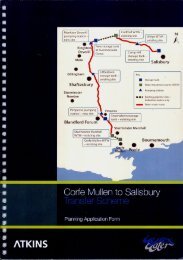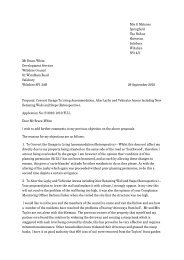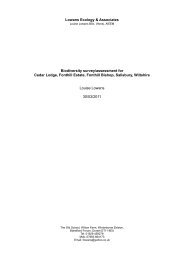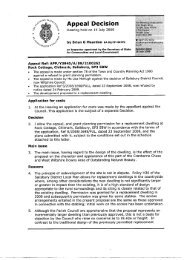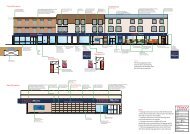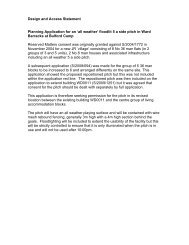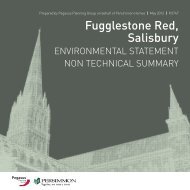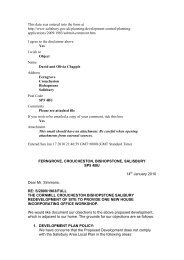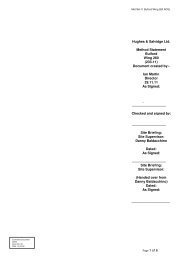English Heritage Stonehenge Environmental Improvements Project ...
English Heritage Stonehenge Environmental Improvements Project ...
English Heritage Stonehenge Environmental Improvements Project ...
Create successful ePaper yourself
Turn your PDF publications into a flip-book with our unique Google optimized e-Paper software.
supports a good range of characteristic species, including sheeps fescue Festuca ovina, upright<br />
brome, crested harir-grass Koeleria macrantha, meadow oat-grass Helictotrichon pratensis,<br />
dwarf thistle, Cirsium acaule, horseshoe vetch Hippocrepis comosa, salad burnet Sanguisorbia<br />
minor and common thyme Thymus polytrichus. It appears to be maintained by relatively heavy<br />
rabbit grazing, and this is reflected in the relatively high frequency of common ragwort Senecio<br />
jacobea and the presence of the Red Data Book Near Threatened species hounds-tongue<br />
Cynoglossum officinale. Scrub is present around the edges of the grassland, which includes<br />
hawthorn, wild privet Ligustrum vulgare, buckthorn Rhamnus catharticus and elder.<br />
3.4.3 SW2 is species-poor improved grassland (NVC MG7) dominated by a very small number of<br />
common grasses and herbs, such as soft brome Bromus hordaceous, perennial rye-grass, white<br />
clover and dandelion.<br />
South Eastern Quadrant<br />
3.4.4 SE1 is a developing broadleaved plantation that forms a southern extension of the Fargo<br />
Pantation. It has a canopy dominated by sycamore Acer pseudoplatanus, although beech Fagus<br />
sylvatica and ash Fraxinus excelsior are also present. Except on the edges there is little in the<br />
way of a shrub layer, although elder is locally abundant in the centre (and appears likely to<br />
pre-date the plantation). The field layer is species-poor with very few characteristic woodland<br />
species, and is patchily dominated by, for example, rough-meadow grass Poa trivialis and nettle<br />
Urtica dioica.<br />
3.4.5 SE2 is an area of developing grassland on an ex-arable field. The sward is patchy, with frequent<br />
bare patches which support a range of common arable weed species. Sheep’s fescue and<br />
upright brome are the most common grass species, with sanfoin, ribwort plantain Plantago<br />
lanceolata and white clover. With time this grassland may develop into CG2 or CG3 grassland,<br />
although many of the characteristic species are not currently present.<br />
North Eastern Quadrant<br />
3.4.6 NE1 is a plantation, of which the southern part has a canopy dominated by sycamore and ash.<br />
The shrub layer is variable in density with hazel Corylus avellana the most abundant species.<br />
The field layer is moderately species-rich and supports a number of woodland species such as<br />
wood speedwell Veronica montana and dog violet Viola riviniana. Although it is likely that this<br />
area was originally a plantation, it has now developed a relatively semi-natural structure and<br />
can be considered a relatively species-poor example of the NVC community W8 Fraxinus<br />
excelsior-Acer campestre-Mercurailis perennis ash-field maple-dog’s mercury woodland.<br />
September 2008 7 Phase II Botanical Surveys<br />
11108605R_Botanical_DW_09-08<br />
Chris Blandford Associates



